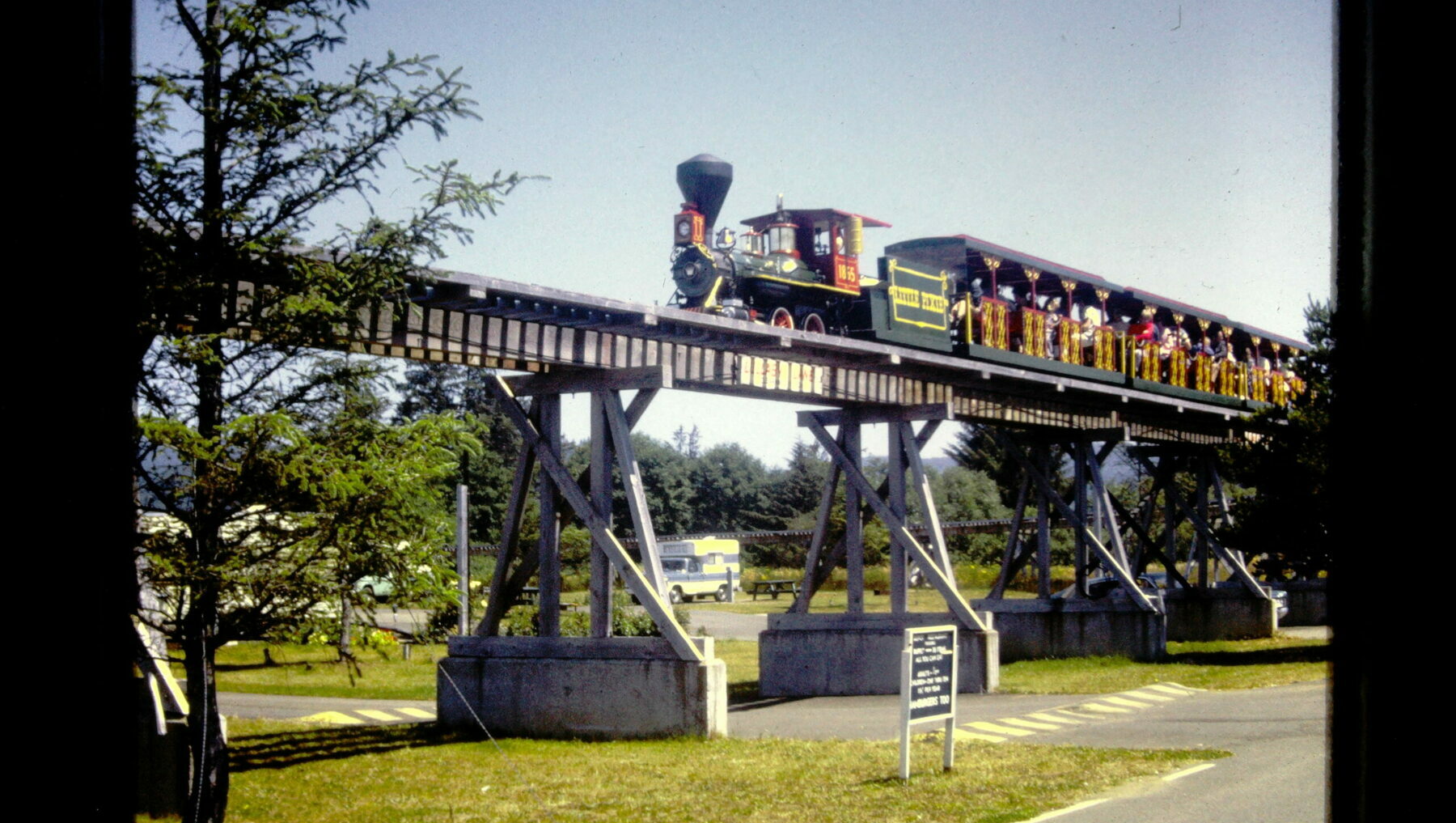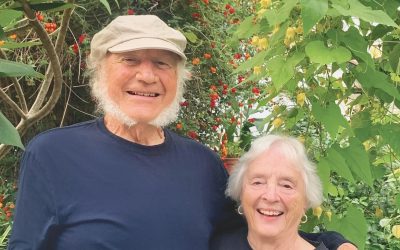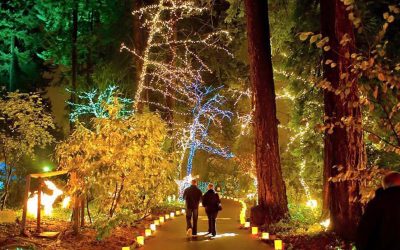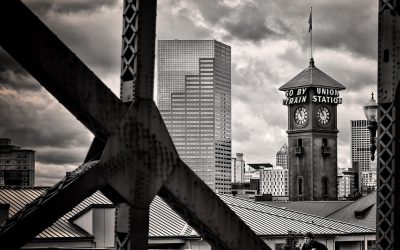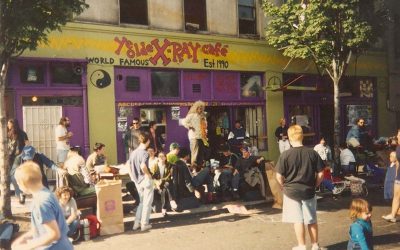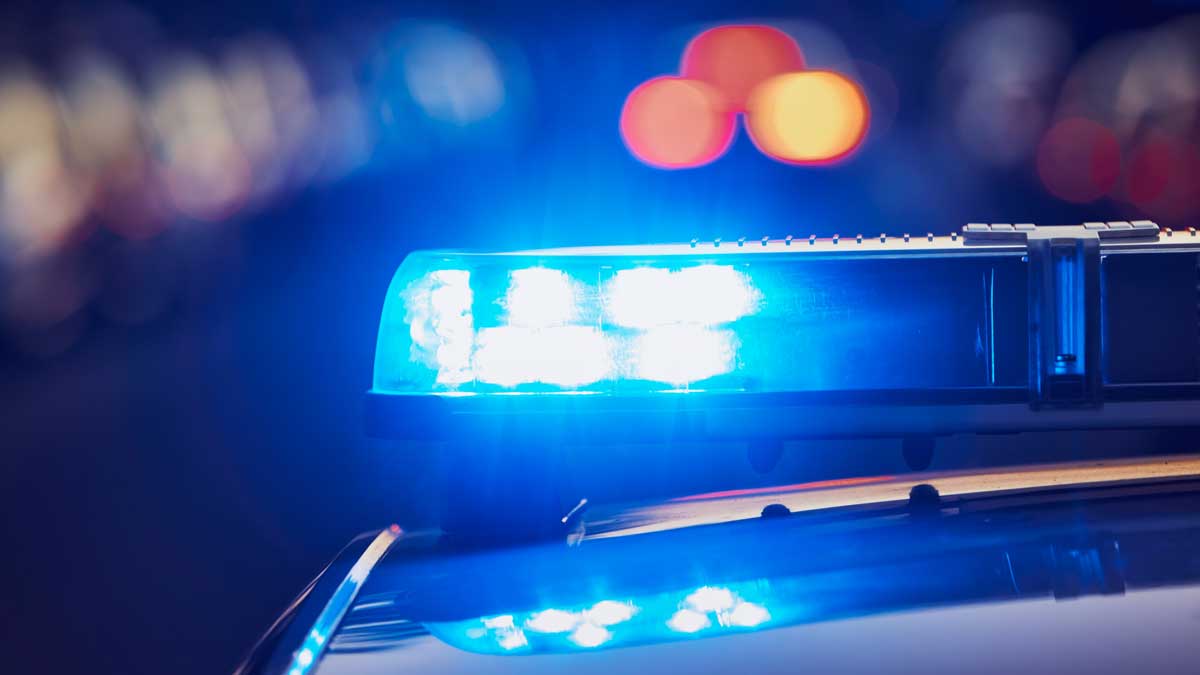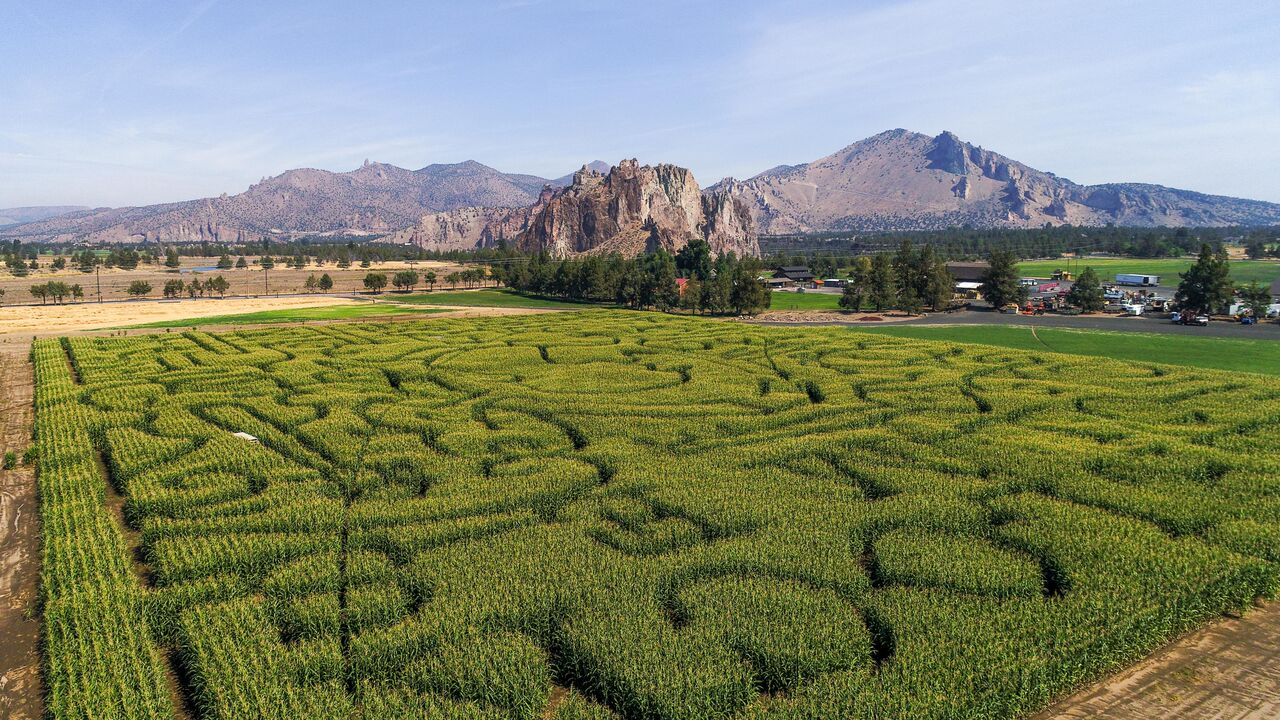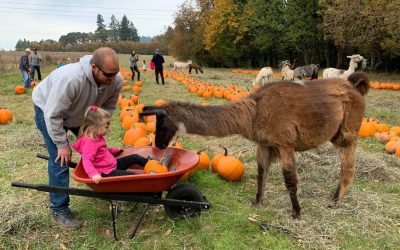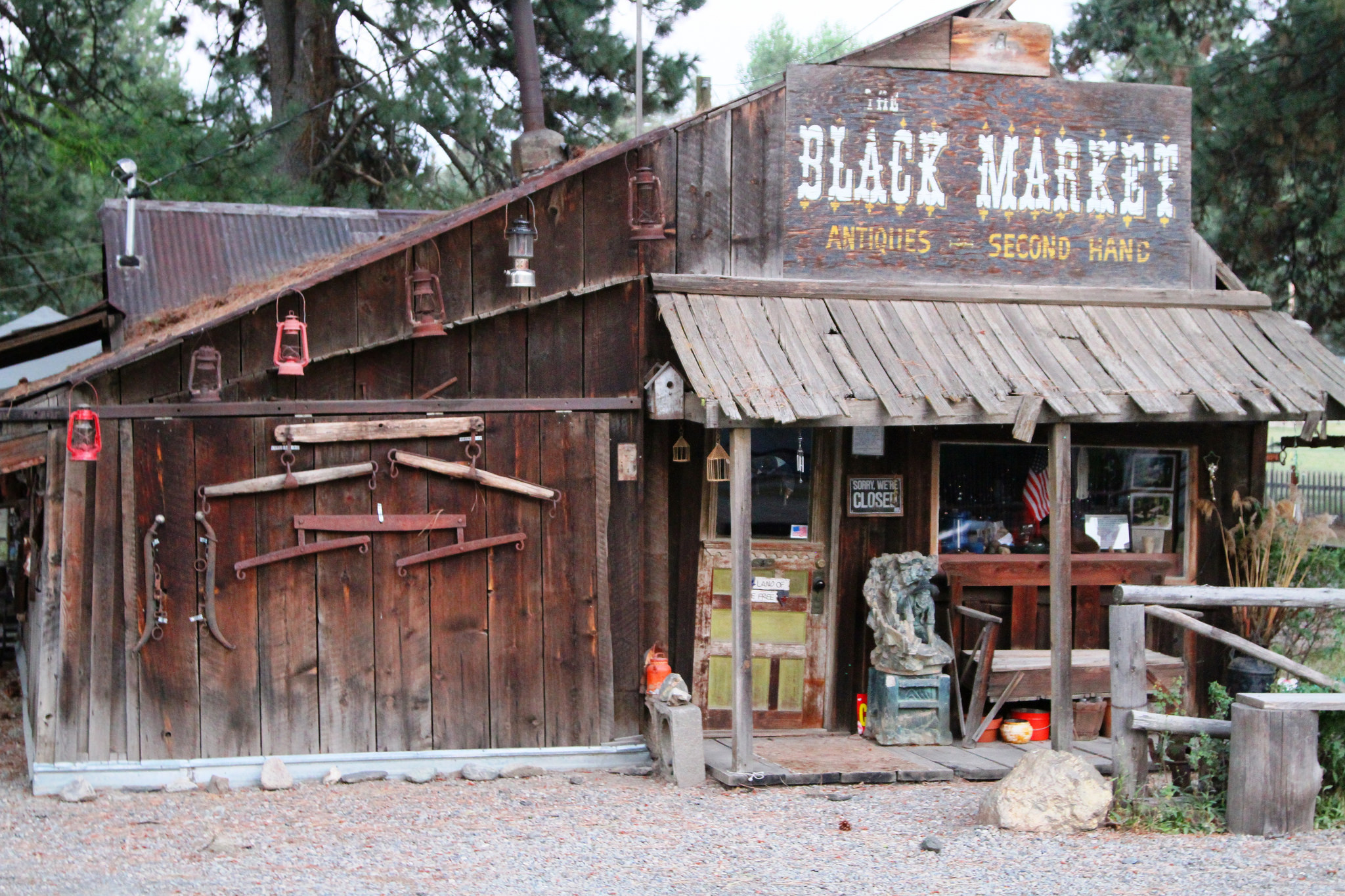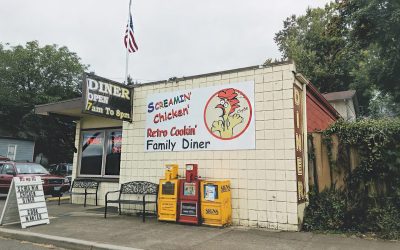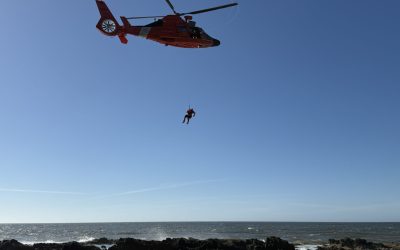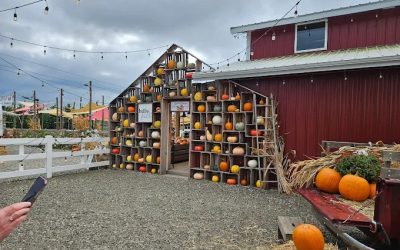You may think the comparison to Disneyland is a long shot, but I assure you: it's completely true.
Jerry and Lu Parks had big dreams in 1964. They already owned one of the most famous restaurants on the Oregon Coast, that with a vision of the future could become a profitable and sprawling venture. After all, Walt Disney's dreams began with just a mouse. The Parks' had their pixies; the magical beginnings of what could be Oregon's very own Knott's Berry Farm or Disneyland.
They called it Pixieland.
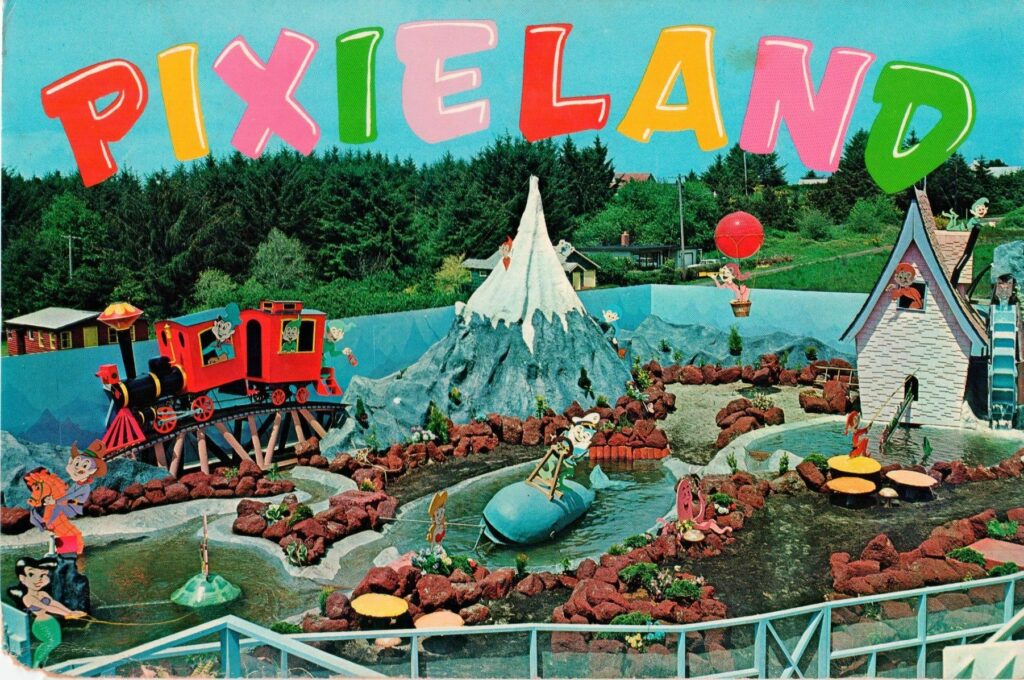
Meanwhile, many years before my birth, the Scott family in Scoggins Valley was flourishing. I may have mentioned this branch of my tree while researching their origins in the lost community that lies beneath the man-made depths of Henry Hagg Lake in rural Washington County. My cousins were growing up on the farm, riding the family horses, running and playing games through the filbert orchards.
Humble Beginnings in the Pixie Kitchen
In 1952, Jerry Parks purchased a somewhat run-down structure on Hwy. 101 that looked for all the world like it belonged in the pages of a Hans Christian Andersen fairy tale. He named his new restaurant Pixie Kitchen, and within the year, the coastal eatery became renowned, like so many mom & pop restaurants, for their very generous portions of fresh seafood and eclectic atmosphere.
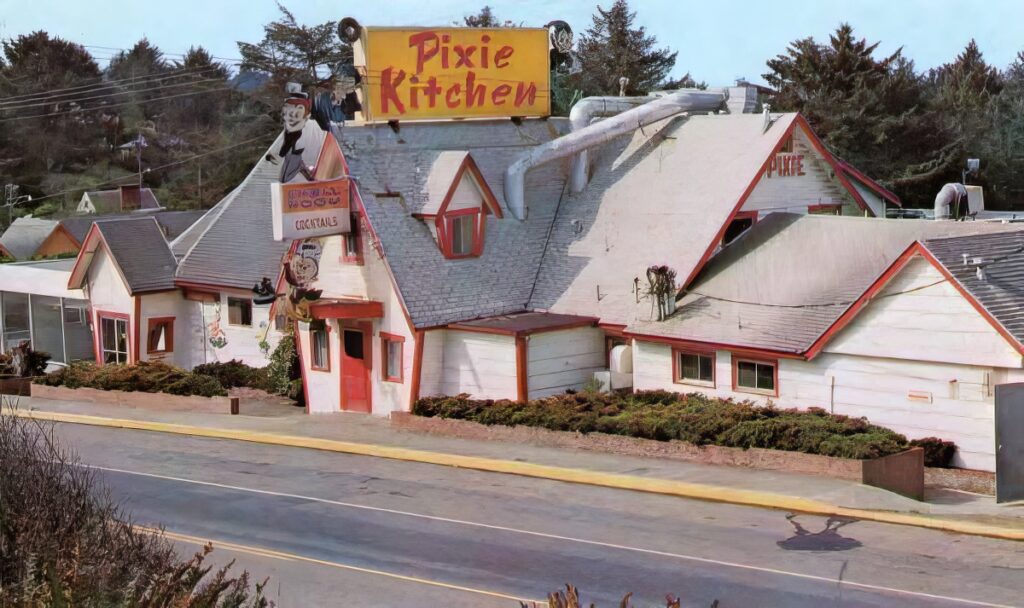
In those days, the Oregon Coast wasn't the hub of tourism that it is now. Sure, families would make the long drive over the coast range, but smooth paved roads weren't what they are now. It was a trek, but Jerry's vision included bringing in more business to the small coastal towns of Oregon, and especially his Oceanlake (now part of Lincoln City) restaurant.
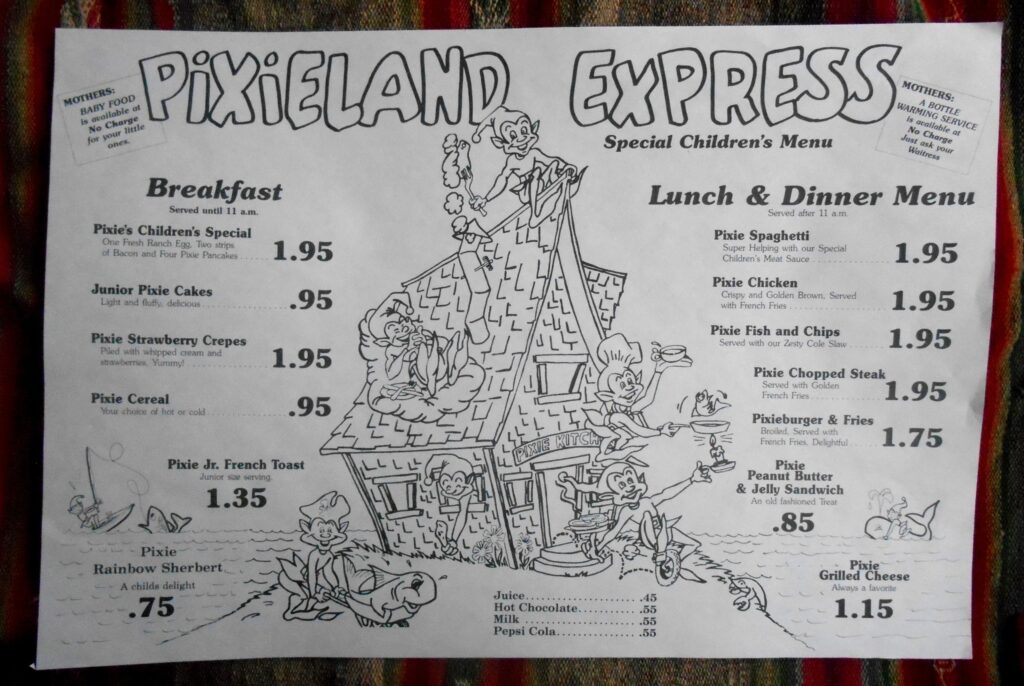
Pixies danced here. Fanciful outdoor gardens filled with colorful decorations kept kids entertained while adults sipped on wine from the Shell Bar and dined on steak and chicken dinners. It was the perfect addition to a family beach getaway, but Jerry Parks knew there could be so much more.
Hello, Pixieland
In a few short years, the Pixie Kitchen had become one of the most famous restaurants on the Oregon Coast. Wait times for a table soared to an hour during the busiest hours, so Jerry designed the mini but elaborate amusement park directly behind the building. This was meant to keep guests (mostly the smaller ones) occupied while waiting to be seated, but it also had the effect of sparking Jerry's imagination.
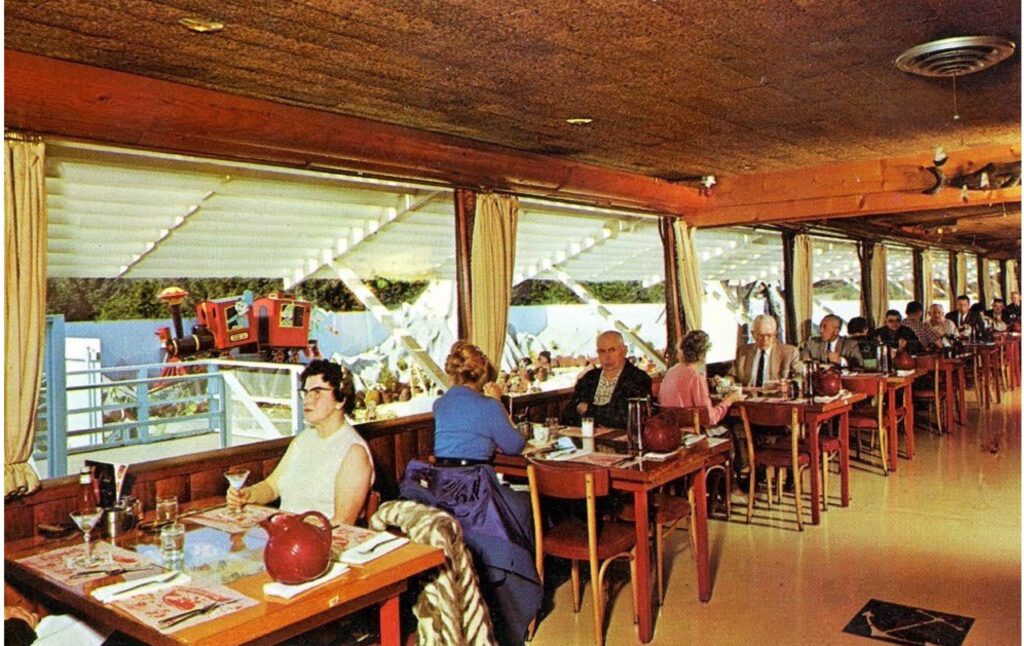
In 1964 he purchased 54 acres of farmland just north of Lincoln City and east of Cascade Head. It was situated on a prime parcel right next to the interchange from Hwy. 18 to 101. Folks driving to the coast via 18 couldn't miss it.
Construction began in the mid-1960s near the tiny town of Otis, Oregon. The area’s natural beauty, with its lush forests and proximity to the Pacific Ocean, provided the perfect backdrop for Pixieland’s whimsical world.
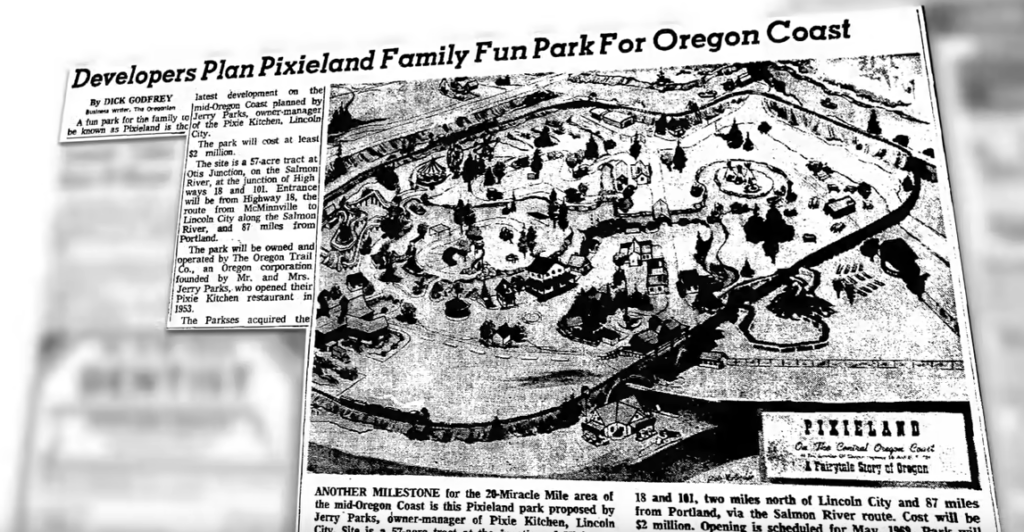
The park officially opened its doors in 1969, featuring attractions like a miniature train, bumper cars, log flume ride, candy kitchen, live performances, and other Disney-esque diversions.
Sometime in the early 1970's, my aunt and uncle, Don and Nancy Scott, packed the kids into the car and headed from Scoggins Valley for a family trip over to the Oregon Coast. They documented part of that road trip, and recently, those digitized slides were passed on to me. Amidst the random family camera-snaps, scenery, pets, and yard pics, I was elated to discover priceless (to me) documentation of Jerry Parks' long gone Pixieland dream.
Family Adventures
There's no way of knowing which of my relatives was behind the camera that day, but the photos, in all their Kodachrome glory, are a testament that a fine time was had by all.
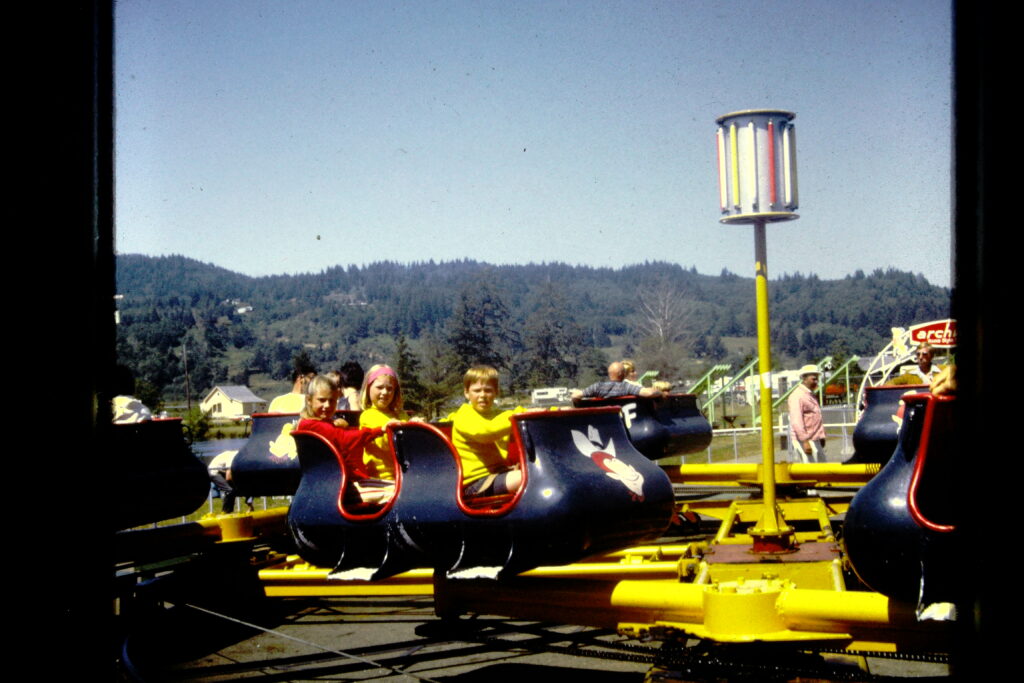
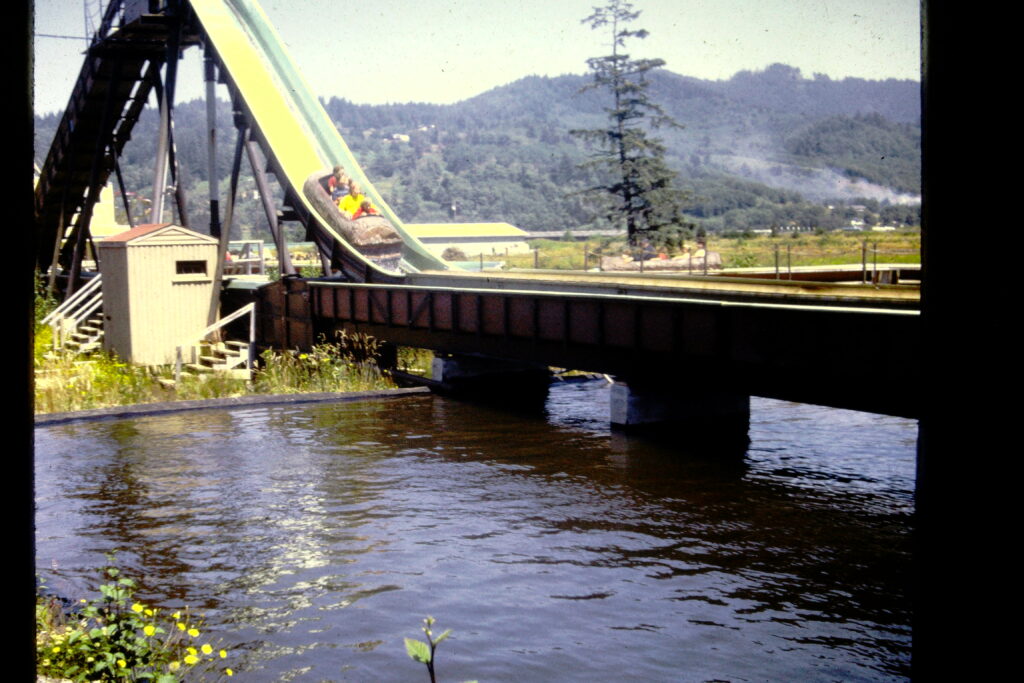
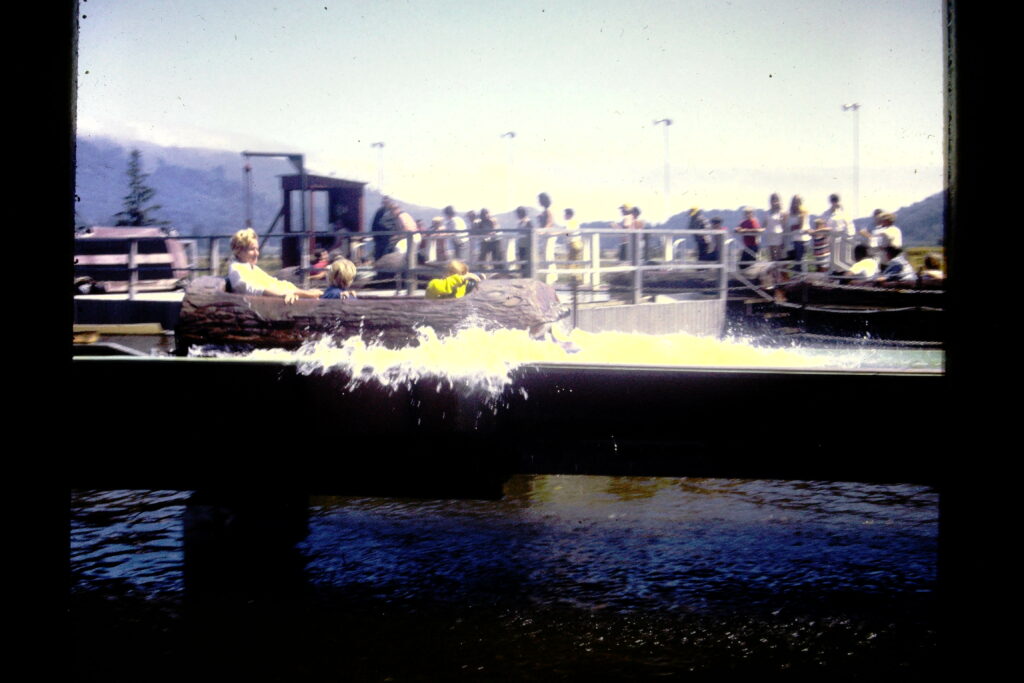
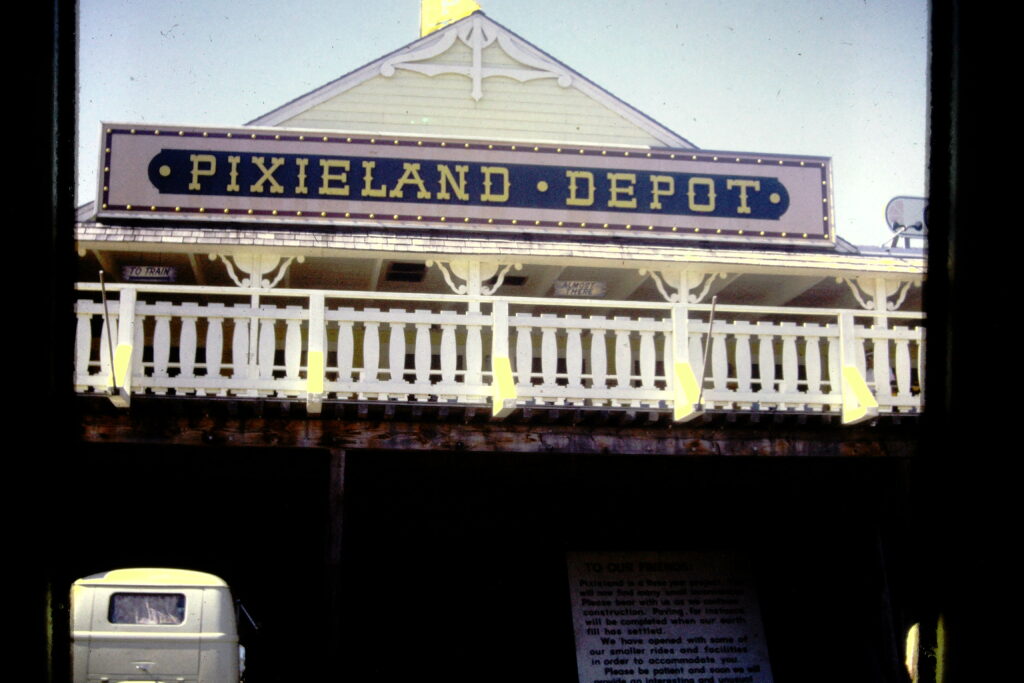
“A fairy tale that never ends”...Until It Does
At this point you may be wondering what happened to all of the pixies and dreams of a bright future for Oregon's little themepark.
Pixieland faced significant challenges from the outset. Its location, while picturesque, was isolated, making it difficult to attract a consistent flow of visitors. Moreover, the park struggled to compete with larger, more established attractions like Disneyland and the burgeoning tourism industry in other parts of the West Coast. Financial difficulties soon began to mount, threatening the park’s future. The 1970s were bringing rapid change to the US economy, and with it, gas shortages and environmental concerns.
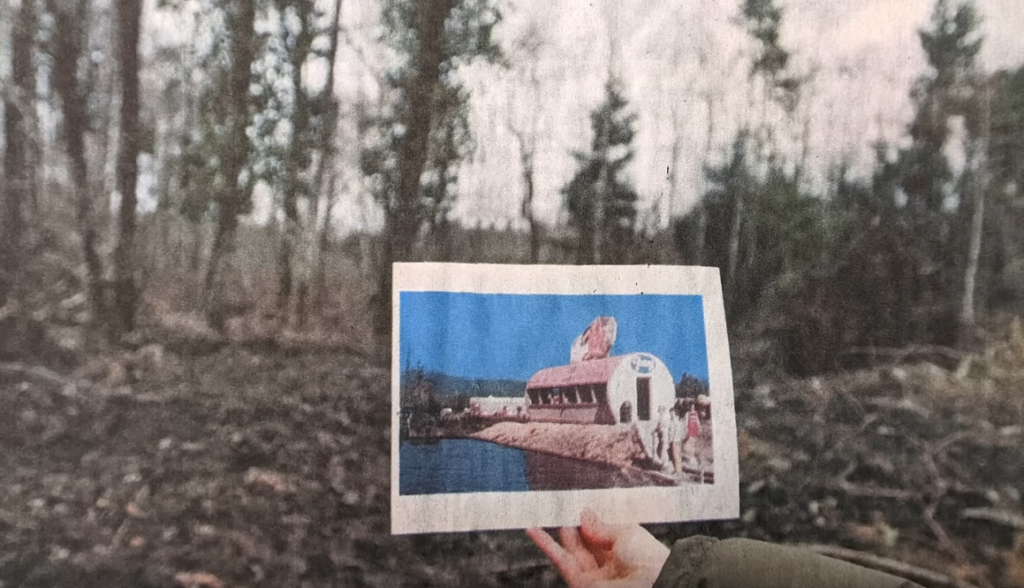
Around this time, President Gerald Ford signed into law the Cascade Head Scenic Research Area, protecting under federal legislation 9,600 acres of coastal land that also encompassed Pixieland. The parcel that Jerry Parks originally purchased had been a wetland habitat adjacent to the nearby Salmon River, and environmentalists were making a case to revert the 54 acres back to their natural state.
Despite the overwhelming popularity of the Pixie Kitchen and better highways leading from inland Oregon to Highway 101, in the short five years of operation, Pixieland had failed to turn a profit. Rising operational costs, combined with declining attendance, forced the park to close its doors in 1974. The closure marked the end of an era for Oregon’s coastal tourism.
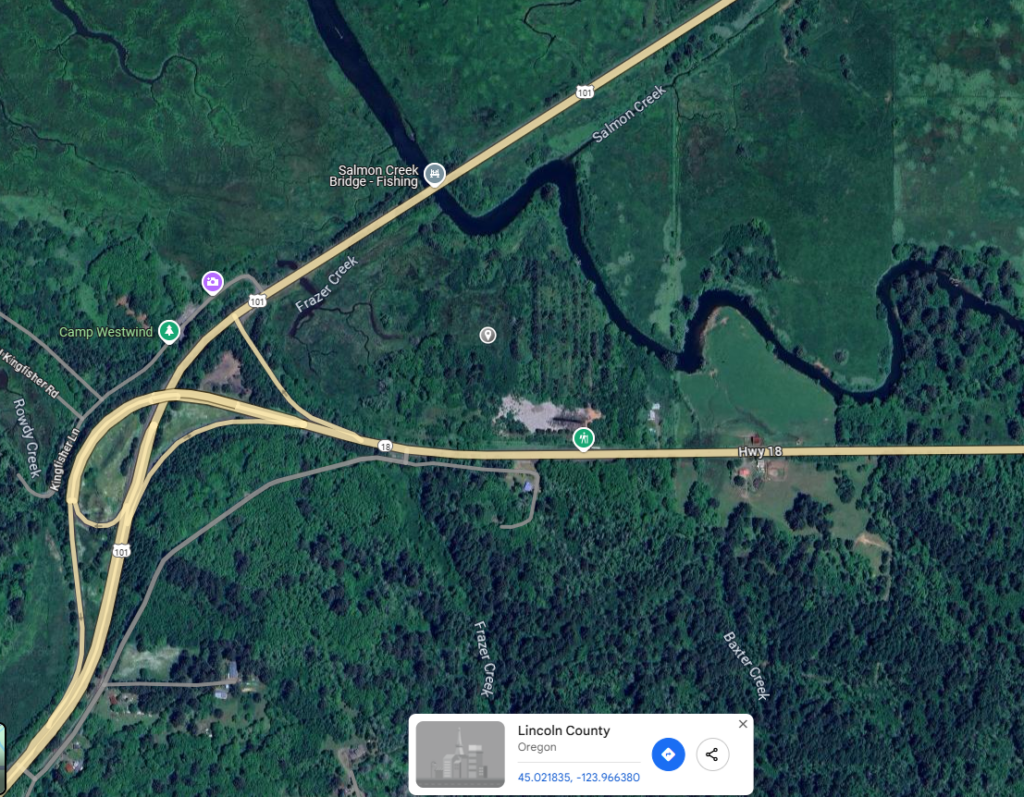
Today, remnants of Pixieland itself are scarce, with only faint traces of the park’s infrastructure remaining as a testament to its existence. The land on which it once stood has been reclaimed by the wetlands, native trees, and wildlife.
Sweet Memories of a Bygone Era
As for the Pixie Kitchen restaurant, its doors were officially closed in 1987 and a Motel 6 resides on the property today. Despite this, ask anyone who remembers Pixieland or eating at the restaurant, and you'll usually be regaled with fond memories and an almost religious reverence for these pieces of Oregon nostalgia. So much so that the Lincoln City Kiwanis have kept the Pixie dream alive in the form of the annual Pixiefest each summer. Fan pages like Facebook's Pixieland Oregon Coast keep the dream alive with a place to revel in memories, memorabilia, and old family photos, not unlike mine.
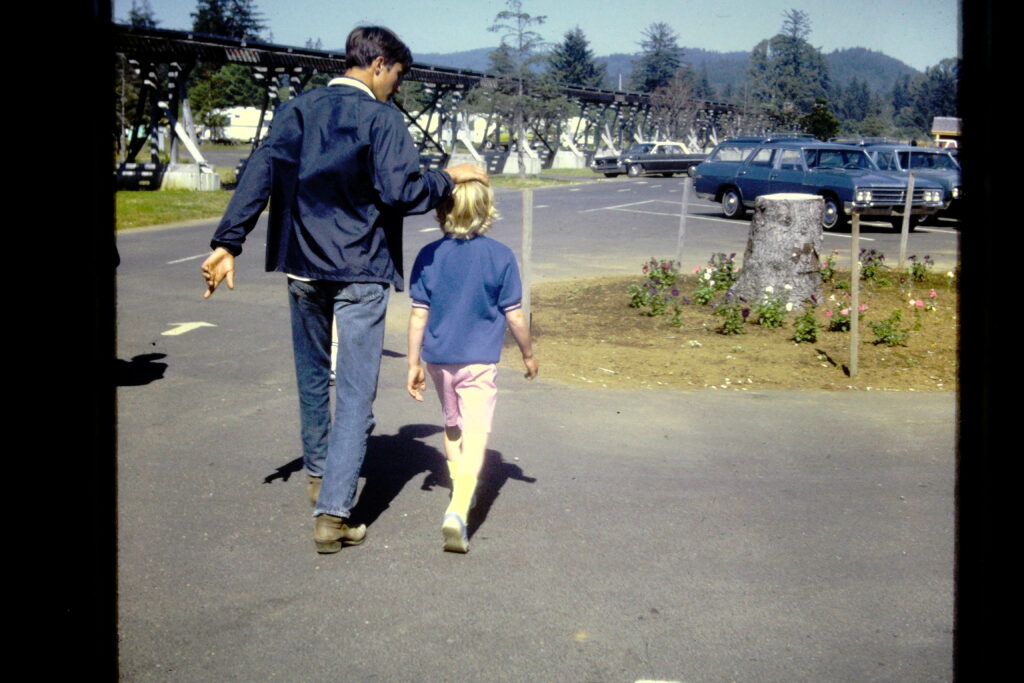
For those who remember Pixieland, it represents a nostalgic piece of Oregon’s past—a symbol of simpler times and whimsical fairy tale dreams.
For a truly excellent deep dive into Pixieland and Oregon Coast history, Peter Dibble's fascinating documentary can be found here:

